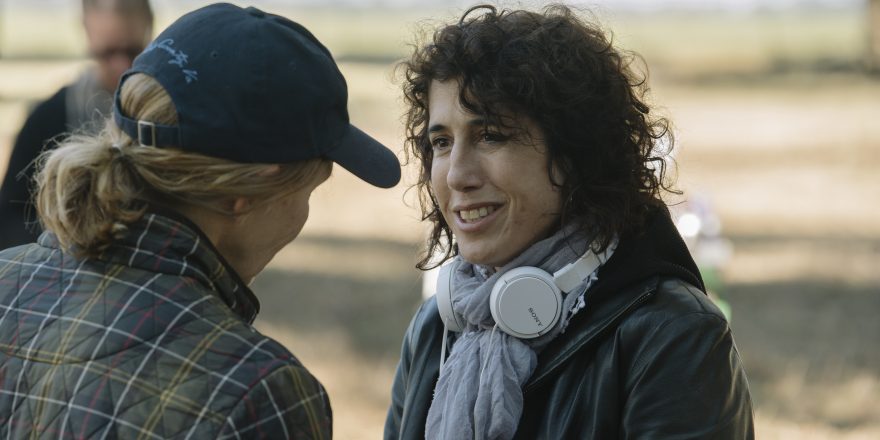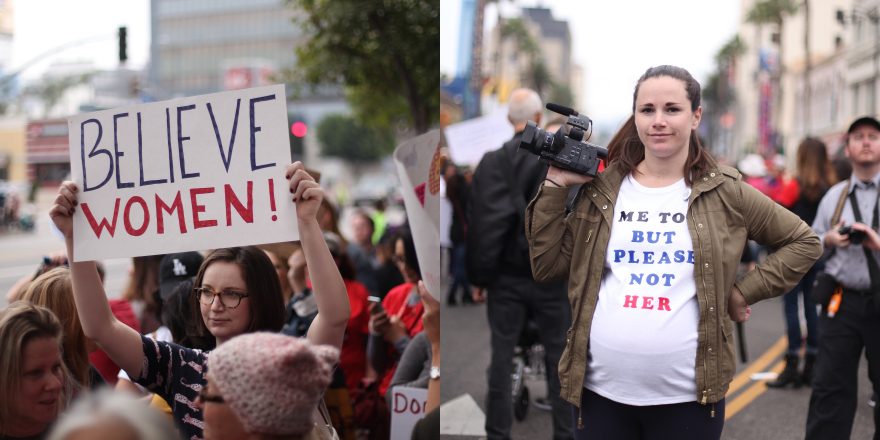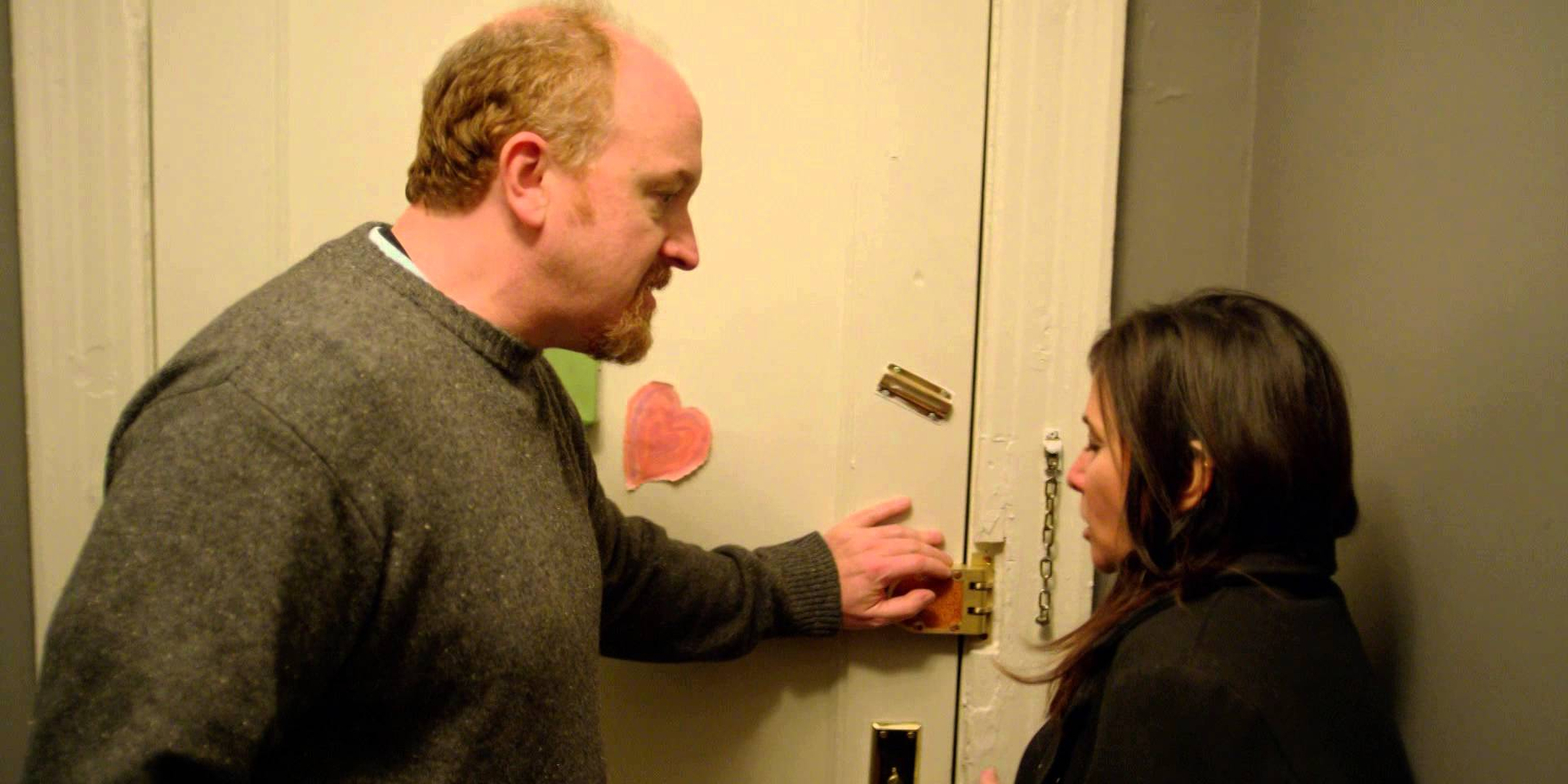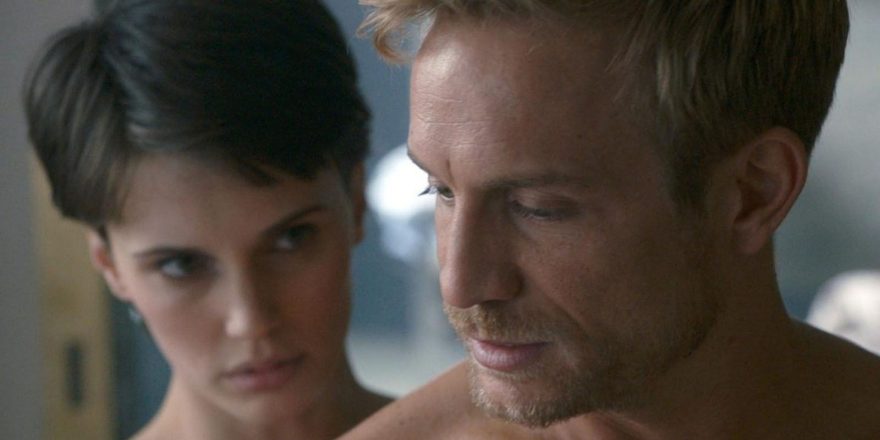Growing up, my father always told me that you should try to do the things you want to do when you’re young, because when you get older, you know too much and that stops you from taking risks. He said being naïve can be a big advantage, knowing the correct way to do something can hamper creativity. In fact, he said that the older people get, the more jaded they get, because they know how hard it is to accomplish things in life. Knowledge makes people fearful –– and fear is a big impediment if you want to accomplish something big. My father was right in many ways, but not the part about being young.
In my late forties, when I decided I would make my next film a fiction feature, I had no concept of how hard it would be. I certainly didn’t know the “right way” to make fiction. Though I had worked for 30 years making documentaries, I’d never even once been on a feature set. My husband, a cinematographer who shoots both docs and fiction, tried to warn me that narrative filmmaking requires a completely different skill set than documentary. I remember we got into a big fight, because I felt he was saying I hadn’t the talent to make fiction; I thought he was being negative. After all, I’d been making films my entire life – how different could the forms be?
Well, both my husband and my father turned out to be right. I had no idea how grueling making my first narrative feature The Tale would be, but my ignorance sometimes turned out to be a blessing. When it was finally finished and it screened at Sundance, I began to share just how we brought The Tale to the screen and quickly I understood that we had gone about it all wrong. How was that possible?
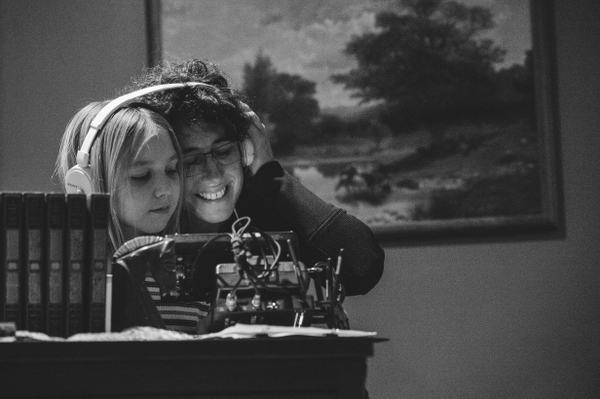
Since I didn’t know the rules of fiction filmmaking, I often solved obstacles that got hurled at me in the best way I knew how, which at times meant relying on the lessons that I had learned from decades of making documentaries. I could write a whole book on the unorthodox way The Tale came to be made, so I’ll just describe a few radical things my team and I did to bring this film to the screen.
The first thing that I have to acknowledge is that the script I set out to make was unusual from the get-go. I attempted to make the screenplay of The Tale – a graphic story about memory and child sexual abuse – as close as possible to the cinematic equivalent of literary memoir. In a strategic decision to protect the film from critics who might say that my portrayal of abuse was a lie, I decided to leave my real name, Jennifer, as the name of the female protagonist of the story. Obviously, the film was incredibly personal for me. But this meant that I was also an authority on the world of the script, perhaps the sole authority on the story, and I determined that it had to be told “right” or I wasn’t willing to make it. I was adamant at various points that I wouldn’t cut pages of the script to drop the budget or take out difficult scenes, like the physical scene with a minor, to make it more sellable. But being adamant doesn’t mean anything! It certainly doesn’t mean you will succeed in making your film, and in fact the opposite, not being flexible, can lead to real failure in filmmaking. So, I knew the ongoing challenge was not just to get the film made, but how to get this story through the daunting, at times originality-crushing obstacle course of fiction filmmaking, without compromising the essential.
I have always produced my documentaries and it was clear to me that I had to remain one of the producers of The Tale if we were ever going to get the film made. But don’t get me wrong, the film had nine other amazing producers, most with more fiction experience than me, and without them The Tale could never have happened. For starters, our senior producer Oren Moverman came on the film in 2012 when it was a rambling 200-page script and always pushed me to aim high, mentoring me through casting and equity financing, both new experiences for me. But one of the many factors to The Tale’s ultimate success was my “scrappy” experience in problem-solving and fundraising that I learned making documentaries, which made me nimble and creative to keep the film going despite all the obstacles.
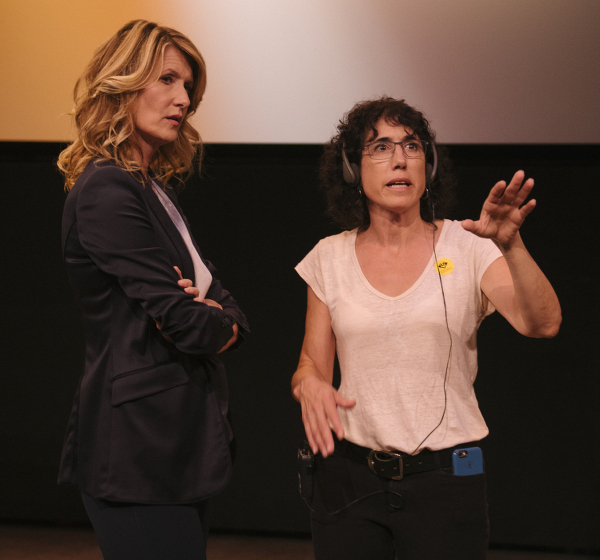
It was daunting trying to get this film funded long before the radical shift in culture and the rise of the #MeToo movement in 2017. Though many liked the script when we first took it out in 2013, the idea of making a film with a significant budget about child sexual abuse with two timeframes, period costumes and sets, children, horses and stunts, scared off most. In the end, it took us two years but by 2015 we ended up funding the production partially with typical funds like European television, tax credits, and several equity investors (led by the marvelously supportive equity partner, Gamechanger Films) – but also quite radically, we added in a significant amount of philanthropic donations based on the potential power of the film to start a dialogue around the issue of child sexual abuse with a social impact campaign I developed with one of the producers, Simone Pero. This impact campaign was not gratuitously developed after the fact but was baked into my concept of the film from the beginning. Accordingly, when we couldn’t raise the budget traditionally, it was a natural choice to go to philanthropists, saying, “If you want to achieve the social impact we know The Tale can have, we need your help to get the film made first.” Every project is different, but first time filmmakers should understand that putting their energy into cracking the funding code of each film is as important as cracking its artistic code.
The other unusual thing with The Tale, which coincided with the need to fundraise parallel to the production, was that we filmed it over eight months with three discrete shoots. This happened due to Laura Dern’s schedule. We were blessed to have an actress of her incredible talent commit to the script, long before it was financed. But 18 months later, when the funding finally came through, her schedule was booked solid and she told me that I would have to find another lead. I was heartbroken. Laura was perfect for the role of Jennifer. I truly couldn’t think of another actress to play that part. And recasting would have set the film back as much as a year, perhaps causing us to lose our equity. One of the things I had learned from years of documentary work is that if you want to make an effective plea to anyone, you have to do it in person. So, I flew to Los Angeles and begged her to stay onboard the film. I offered to break up the shoot to work around her schedule, filming partly in Los Angeles after the main shoot in Shreveport, Louisiana. Luckily, she agreed. Ironically, unlike with fiction, shooting over time, and stopping and starting is very normal in documentary. I was used to holding together story ideas over years as we picked up the scenes that would fulfill the storyline one by one. In fact, sometimes shooting over time can be useful because you get to think about story and structure in the periods between shoots and make sure you get what you need to make it all work together.
Similarly, due to the shoot being spread out over such a long period, the editing got fractured as well. We started editing in Germany as part of our co-production agreement, but we hadn’t finished shooting the film, so after I came back to the U.S. for the final shoot in August 2016, we decided to move the edit back home and continue with a second editor. We hoped to finish the film in 2016 in time for Sundance, and tried to picture-lock in October. However, none of us were happy and the team individually and collectively agreed the film wasn’t ready. Together we faced the painful decision to continue cutting and returned to the edit a third time to finish the film in 2017. Again, this type of drawn-out edit is very unusual in fiction, but documentaries are often edited for a year or more. I can only say that the film gained enormously from these three different editing periods and three editors.
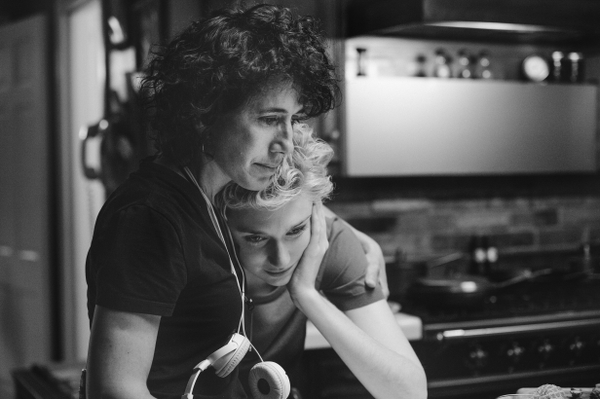
When the film finally was finished in the summer of 2017, a year later than planned, we held our breath, not knowing what would happen to it. The film was the most explicit and radically honest film about sexual abuse I had seen. Would audiences walk out? Would the critics pan it? Meanwhile in the fall 2017, we watched as the world changed with story after story about Harvey Weinstein and numerous other sexual predators and the rise of the #MeToo movement. We had no idea how much this seismic shift would open the door for the acceptance of our film. Luckily, The Tale was invited to Sundance to premiere in January 2018. I was quaking inside. My hope was that the film would get a theatrical release, but I didn’t know if we would even receive one bid.
At the film’s premiere, my world changed as The Tale received the first standing ovation of the festival, followed by standing ovations at each of the other four screenings. The reviews and press flooded in and heralded it as the first film of the #MeToo movement. It seemed that The Tale had launched at the perfect moment when audiences were finally ready to see a film on this taboo subject. The distributors began calling our sales agents.
To our surprise, among those who reached out was HBO Films, a company we had never once considered would be interested. I was shocked, but what HBO offered was far beyond any other theatrical distributor. Having tracked the independent cinema releases that fall, I had noticed that those that made it at the box office were lighter and uplifting “date-night movies,” certainly much lighter than our film. I definitely knew The Tale was not a Saturday night kind of film! I was terrified that if we went with a typical theatrical distributor, the film might die a quick death after a few weeks – and all our efforts would end up in The Tale never getting an audience. HBO, on the other hand, would get the film out quickly, put considerable advertising behind the film, offer us millions and millions of viewers and a seat at the awards table (award nominations bringing still more viewers). After 24 hours of conversations with our team, I did an about-face and agreed to go with HBO.
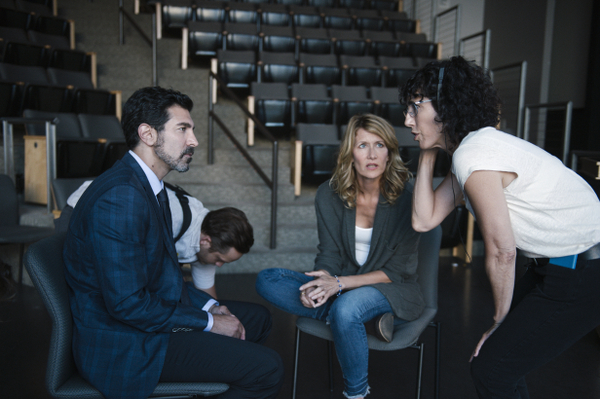
Flash forward nearly a year later, and I can only say HBO have proved a fantastic, engaged partner. Besides making a huge impact on television with viewers in the many millions just in the U.S. alone, their campaign has so far led to many festival awards, two Emmy nominations, and two Gotham nominations. This is extraordinary given the subject matter and the small independent nature of the film. Moreover, we have been able to fulfill our outreach and audience engagement plan on multiple platforms with HBO’s blessing, including significant international festivals. Although we have not had a typical theatrical release, we have had scores and scores of special theatrical screenings for audiences across America and the world, that are still going on today. We have shown the film for universities, organizations, conferences across America and the world – and even at the U.N. in both Geneva and New York.
There are many lessons to be taken from The Tale. I know from experience that no two films are alike and the first of anything is always incredibly tough. I remember making my first feature, Beirut: The Last Home Movie. I used to say that there was blood all over the floor after I completed it! Similarly, making The Tale was as hard as it gets – no one on our team would ever want to repeat this model and I wouldn’t wish this kind of hardship on any filmmaker! But there are some lessons to be passed on: we have to remember that there is not one right way to make anything, let alone fiction films. New ideas are always difficult to get through the industry gauntlet, because no one has seen them before. Each film is unique, with a different code that has to be cracked. I’d like to think that The Tale identified a fresh type of cinema called “Impact Fiction” that can honestly attract a new source of financing to make narrative films on challenging subjects that can change the world.
All images courtesy of Jennifer Fox.


